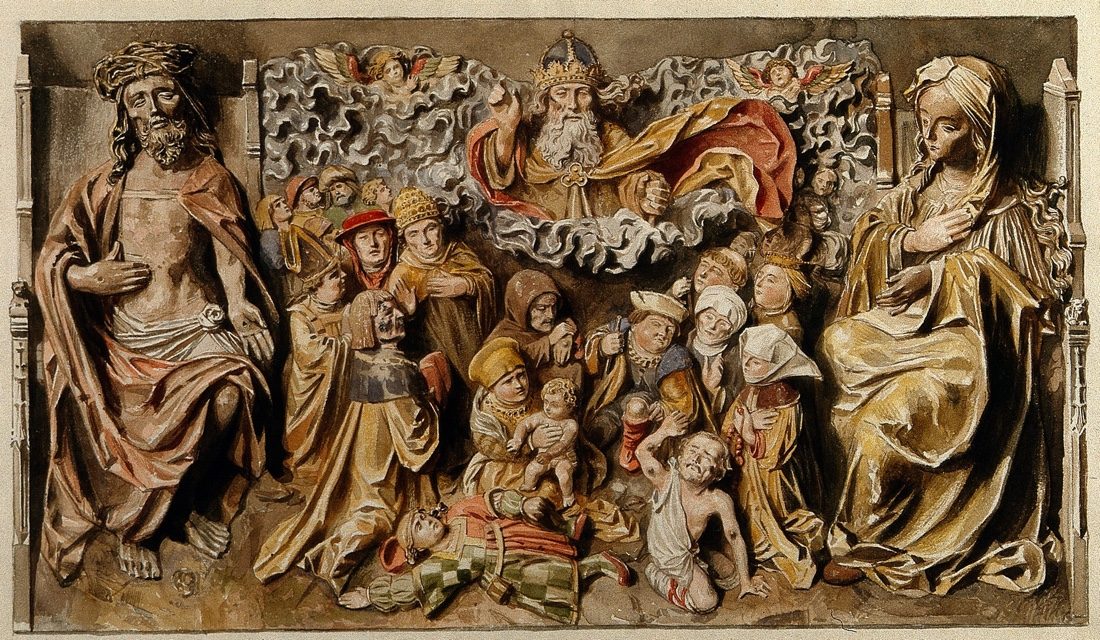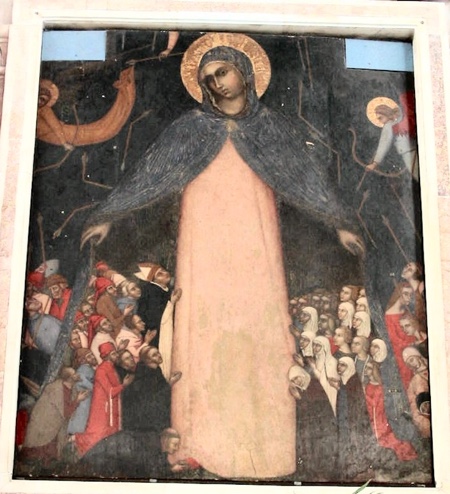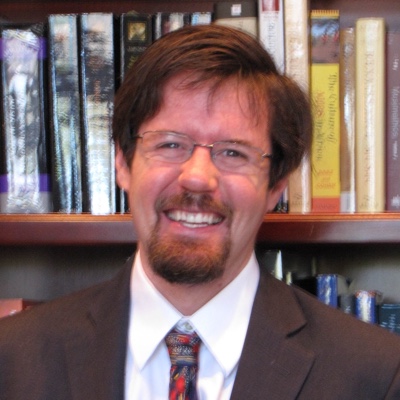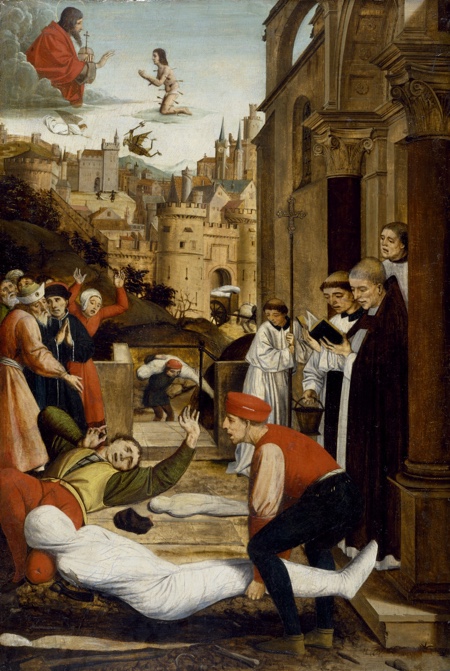
When, as a doctoral student in 2006-08, Christopher Macklin began exploring how the musical world responded to the deadly plague that devastated Europe from its acme in the 14th century to the middle of the 18th century, the subject seemed remote and, well, academic. But with the entire globe today engulfed in a new pandemic — COVID-19 — his research has taken on special immediacy and relevance.
Watching singers and instrumentalists of today pivot from live performances to streaming concerts from home and participating in online fundraisers has caused Macklin — a former assistant professor of musicology at the University of Illinois at Urbana-Champaign who now resides in Montgomery, AL — to wonder what professional musicians did during the Black Death. How did they respond when their livelihoods where threatened? How did their relationships with their churches and communities change during that time centuries ago?

One of the big surprises of the plague era is that little music seemingly was written about it. “I absolutely came into the project thinking that I would find a lot of music,” Macklin said, “because it just seemed like such an amazing, psychological trauma to deal with. And we have this idea inherited from the Romantic era that art is something that happens because a composer’s soul is impacted in a certain way. That was what I was expecting, but I didn’t find it.”
But just because few works specifically referring to the plague have survived doesn’t mean that music wasn’t being written and performed in response to it. In the 14th century, the human body was thought to be composed of four states or humors — hot, cold, wet, and dry — and they all had to be in proper balance for good health. Too much melancholy or black bile, which was cold and wet, would increase one’s susceptibility to illness, so it was imperative to talk with friends, tour pretty gardens, and enjoy pleasant, uplifting music. The challenge for music historians has been determining exactly what those spirit-raising works were. “Music was being played,” Macklin said, “but if it mentioned plague and death and suffering and all those things, it might have been not what you wanted to have in a moment like that.”
One medieval work that does make specific mention of the plague is a 15th-century Marian hymn, Stella celi extirpavit, a prayer for healing. In Macklin’s 2010 essay in the journal Early Music History, he offers this translation of the text adapted from a 1994 book, The Black Death:
Star of Heaven,
who nourished the Lord
and rooted up the plague of death
which our first parents planted;
may that star now deign
to hold in check the constellations
whose strife grants the people
the ulcers of a terrible death.
O glorious star of the sea,
save us from the plague.
Hear us: for your Son
who honours you denies you nothing.
Jesus, save us, for whom
the Virgin Mother prays to you.
Macklin sees many striking similarities between the era when Stella celi extirpavit was written and today. During an outbreak of the plague in Milan in 1576-78, for example, churches were shut down, much as they have been in recent months, so thousands of the sequestered faithful stood in the windows and doors of their homes and sang hymns and chants at coordinated times. In much the same way in mid-March, residents along the empty streets of Siena joined together to sing a traditional folk song, “Canto della Verbena” (And While Siena Sleeps) — a phenomenon captured on several YouTube videos.
In the introduction to The Decameron, a collection of novellas set during the plague, Giovanni Boccaccio (1313-1375) writes about the two predominant responses to the contagion. On one hand, many residents calmly took refuge at home, reading their bibles and singing hymns to themselves. But others, convinced the end of world was coming, boisterously partied in bars and sang drinking songs in the streets.
“We’ve seen both of those reactions,” Macklin said of the COVID-19 pandemic.
Immediately after shelter-at-home orders were issued in mid-March, cross-genre singer and mandolin player Chris Thile launched a streaming series, Live from Home, as a replacement for his weekly stage and public-radio show, Live from Here, which had to be suspended. Hundreds of other musicians have undertaken similar virtual projects. At the same time, spring-break gatherings went on unabated in Florida, and large parties across the country have continued to spring up in defiance of sequester orders.

Macklin discovered Stella celi extirpavit as a graduate vocal student when he was looking for themes for possible choral programs and delved into the idea of plague and pestilence. He came across a c. 1479 version of the hymn in the well-known Eton Choirbook by Walter Lambe, probably the most commonly performed version of the hymn. Further research revealed it had also appeared in other guises elsewhere, including its earliest known appearance some time before 1420 as the underlay of a three-voice descant motet attributed to John Cooke in the Old Hall Manuscript.
“As I dug into it a little bit more,” Macklin said, “I realized that not only was this an interesting piece in how it reflected the combination of bringing music and medical thought and religion all together, but it also had this interesting history itself.”
The exact origin of Stella celi extirpavit remains unknown. When Macklin began his research, he was “absolutely expecting” to find the text in a collection of poetry, one that a composer might have drawn on. But so far, such a source has remained elusive. It is possible that the music and text were somehow conceived together. But Macklin believes the hymn has links to the artistic and intellectual concerns of the Franciscans and could be an example of their assigning a sacred text to a secular melody.

About the Cooke version, Macklin notes in his journal article that the setting comes off as “retrospective and anomalous,” even considering that much of the repertoire in the Old Hall Manuscript is written in a conservative style. He points to its rigid homophony in all three voices and its “very short melodic distance between major cadences.” He can’t explain the discrepancy between this setting and the more seemingly up-to-date approach that Cooke took to other music in the volume. “It’s not that unusual to not have certainty for books that are 600 years old,” he said.
As for other musical works with references to the plague, Macklin has done research on a votive mass written during the contagion, and there are examples of individual works to sing to saints with reputations for healing, such as motets written in honor of St. Sebastian. But Stella celi extirpavit clearly stands out. “I wouldn’t want to say it is unique,” he said, “but there are very few hymns that are like this.”
Kyle MacMillan served as the classical music critic for the Denver Post from 2000 through 2011. He is now a freelance journalist in Chicago, where he contributes regularly to the Chicago Sun-Times and Modern Luxury and writes for such national publications as the Wall Street Journal, Opera News, Chamber Music, and Early Music America.


Pingback: Episode 115 – Medieval Music and Disease with Karen Cook | Infectious Historians